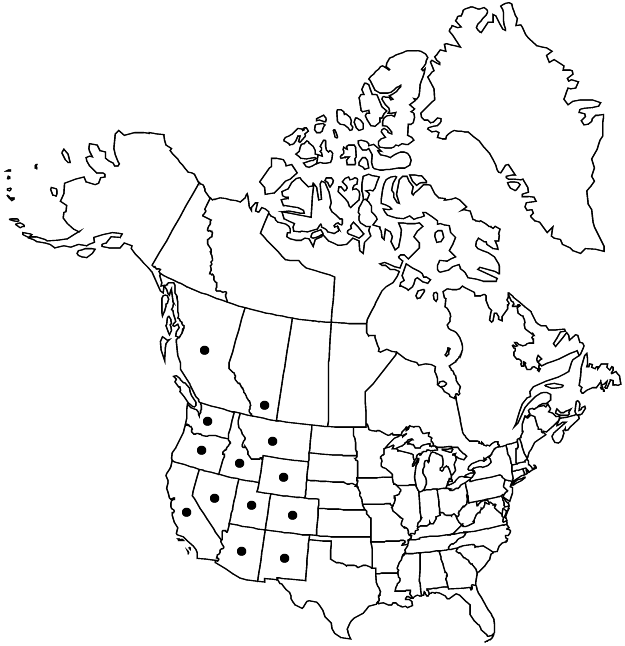Bistorta bistortoides
Bull. Torrey Bot. Club 33: 57. 1906.
Plants (10–) 20–70 (–75) cm; rhizomes contorted. Stems 1–3. Leaves: ocrea brown, cylindric, 9–25 (–32) mm, margins oblique, glabrous; petiole attached to sheath 10–35 (–50) mm, usually wingless, rarely winged distally, (10–) 30–70 (–110) mm; blade elliptic to oblong-lanceolate or oblong-oblanceolate, (3.5–) 5–22 × 0.8–4.8 cm, base tapered to rounded, rarely abruptly truncate or cuneate, often asymmetric, margins entire, sometimes wavy, apex usually acute to acuminate, rarely obtuse, abaxial face glabrous or pubescent with whitish or brownish hairs, glaucous, adaxial face glabrous, not glaucous; cauline leaves 2–6, petiolate proximally, sessile distally, gradually reduced distally, blade elliptic or lanceolate to linear-lanceolate. Inflorescences 1 (–2), short-cylindric to ovoid, (10–) 20–40 (–50) × (8–) 12–25 mm, bulblets absent; peduncle 1–10 cm. Pedicels ascending or spreading, 2–8 (–11) mm. Flowers 1–2 per ocreate fascicle; perianth white or pale-pink; tepals oblong, 4–5 mm, apex obtuse to acute; stamens exserted; anthers yellow, elliptic. Achenes yellowish-brown or olive-brown, 3.2–4.2 × 1.3–2 mm, shiny, smooth. 2n = 24.
Phenology: Flowering Jul–Sep.
Habitat: Streambanks, moist or swampy meadows, alpine slopes
Elevation: 1300-3800 m
Distribution

Alta., B.C., Ariz., Calif., Colo., Idaho, Mont., Nev., N.Mex., Oreg., Utah, Wash., Wyo.
Discussion
Infrequent specimens of Bistorta bistortoides have basal leaf blades that are lance-ovate and abruptly contracted at the bases, and petioles distinctly winged distally, similar to those of B. officinalis.
Roots of western bistort were used in soups and stews by the Blackfoot, boiled with meat by the Cherokee, and used in a poultice that was applied to sores and boils by the Miwok (D. E. Moerman 1998).
Selected References
None.
Lower Taxa
"/2" is not declared as a valid unit of measurement for this property.